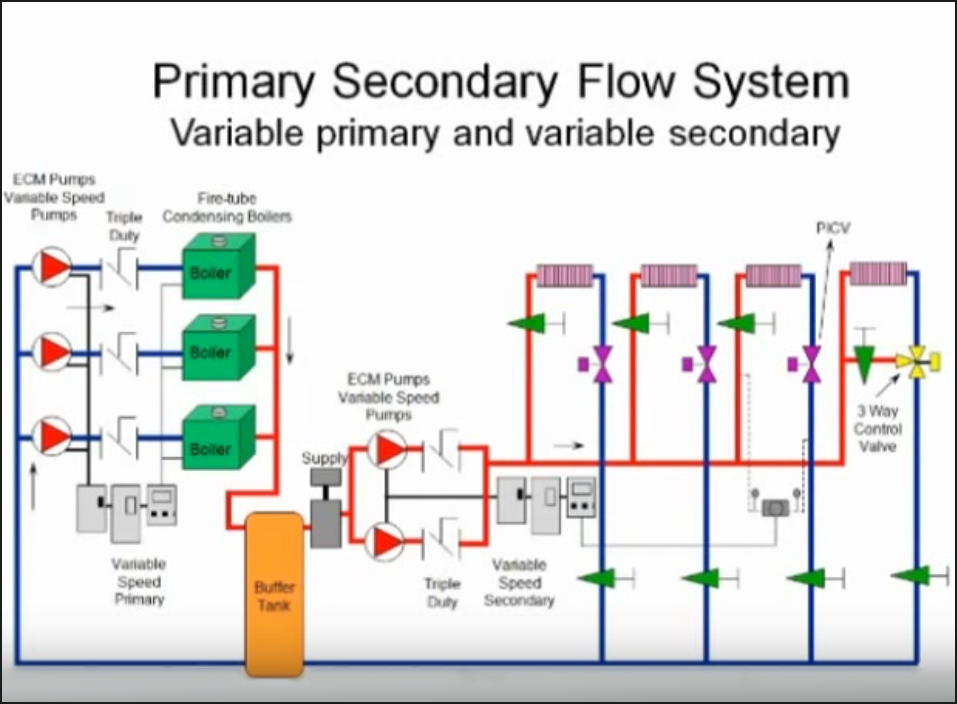Modern Pump Selection Part 3: Impact of Constant Fixed Head On Pump BEP
/In our last blog we explained why in real life HVAC applications, variable speed pumps almost never operate at zero speed. Even at no flow, the impeller must be spinning enough to produce some amount of pressure at the 2-way valve in order to quickly establish full flow at the critical circuit IF demand suddenly occurs. Here's a silly way to think about it....
Read More




